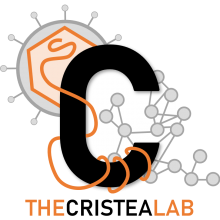Sirtuin Lipoamidase Activity Is Conserved in Bacteria as a Regulator of Metabolic Enzyme Complexes
Type
Lipoic acid is an essential metabolic cofactor added as a posttranslational modification on several multimeric enzyme complexes. These protein complexes, evolutionarily conserved from bacteria to humans, are core regulators of cellular metabolism. While the multistep enzymatic process of adding lipoyl modifications has been well characterized in , the enzyme required for the removal of these lipoyl moieties (i.e., a lipoamidase or delipoylase) has not yet been identified. Here, we describe our discovery of sirtuins as lipoamidases in bacteria and establish their conserved substrates. Specifically, by using a series of knockout, overexpression, biochemical, , proteomic, and functional assays, we determined the substrates of sirtuin CobB in as components of the pyruvate dehydrogenase (PDH), α-ketoglutarate dehydrogenase (KDH), and glycine cleavage (GCV) complexes. assays provided direct evidence for this specific CobB activity and its NAD dependence, a signature of all sirtuins. By designing a targeted quantitative mass spectrometry method, we further measured sirtuin-dependent, site-specific lipoylation on these substrates. The biological significance of CobB-modulated lipoylation was next established by its inhibition of both PDH and KDH activities. By restricting the carbon sources available to , we demonstrated that CobB regulates PDH and KDH under several growth conditions. Additionally, we found that SrtN, the sirtuin homolog in Gram-positive , can also act as a lipoamidase. By demonstrating the evolutionary conservation of lipoamidase activity across sirtuin homologs, along with the conservation of common substrates, this work emphasizes the significance of protein lipoylation in regulating central metabolic processes. Here, we demonstrate that sirtuin lipoamidase activity exists in both Gram-positive and Gram-negative bacteria and establishing its conservation from bacteria to humans. Specifically, we discovered that CobB and SrtN act as lipoamidases in and , respectively. Intriguingly, not only is this sirtuin enzymatic activity conserved, but also the lipoylated substrates and functions are conserved, as bacterial sirtuins negatively regulate the lipoylation levels and activities of PDH and KDH. Considering that PDH and KDH regulate two carbon entry points into the tricarboxylic acid cycle, our finding highlights lipoylation as a conserved molecular toggle that regulates central metabolic pathways. Indeed, our findings from tests in which we limited nutrient availability support this. Furthermore, this study illustrates how the integration of technologies from different disciplines provides avenues to uncover enzymatic activities at the core of cellular metabolism regulation.

